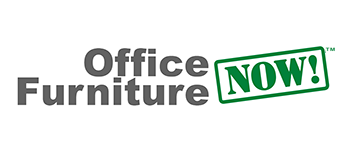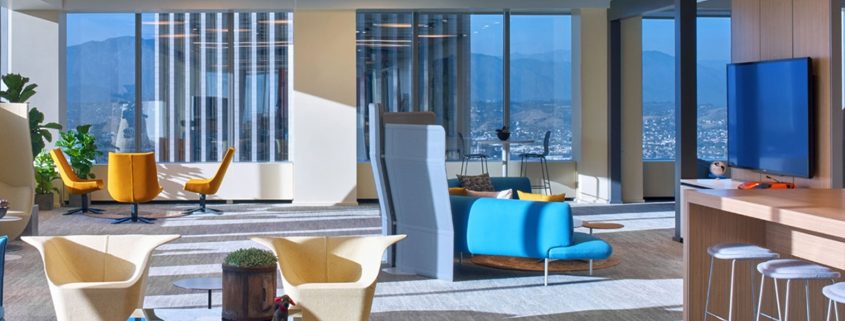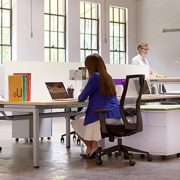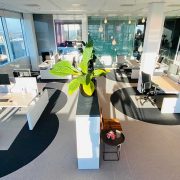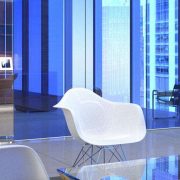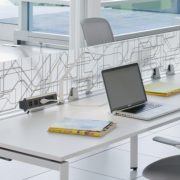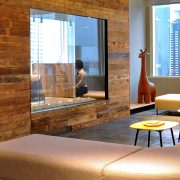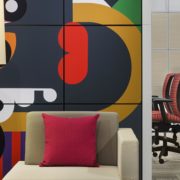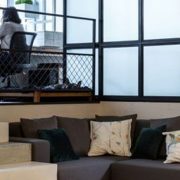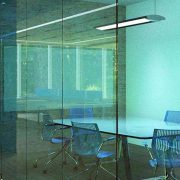Defining Place Identity In An Open Office
Change is a constant in any environment, and office design is no exception. Defining place identity is an integral part of the design process when creating a workspace of inclusion. The pressure is on to start up, retain talent, encourage cross-functional collaboration, enhance exposure to different kinds of expertise, and accelerate creativity and innovation. What we’ve learned is that what works for one industry has not necessarily worked for all.
The tech industry heralded the open office movement with a bold, colorful style. They literally blew the doors off traditional office design with wide open spaces that encouraged a culture built on conversation. But their cool playful style, that incorporates games, hammocks, and distractions, fell short of impressing a lot of businesses. West coast style failed to make the grade on the east coast. Because many companies felt the work environment needed to make sense for more than one group of people.
Defining Place Identity
The signals went down. So establishing a strong sense of connection with place identity and creating a sense of belonging has become part of the design strategy. The depersonalization often found in open office spaces began the disconnect. Reestablishing that connection and sense of identity begins when the space is purposefully designed to foster creativity, increase collaboration, enhance flexibility, and promote informal communication. Across all departments and all levels of tenure.
The tech company HubSpot exemplifies the shift well. HubSpot facilities director Kenneth Papa said the message from tech companies a decade ago was reasonably clear: they were expected to be on the job constantly.
“It’s murky ground. It’s very much a gray area where you build something to get people to never want to leave versus building something that people want, could use, and will give them a better quality of life,” Papa said.
Practicality drives many office decisions for smaller companies. Things like proximity to transit is crucial, for staff and clients alike. Being able to come to work and have everything you need to do your job well is another priority. Workers with a strong sense of place identity perceive the office space differently. They naturally view it as collaborative, social, flexible, energetic, and comfortable. Aside from the perks of distraction.
A Culture of Inclusion
Creating an office culture of inclusion is where retention and loyalty come to life. Fostering a sense of belonging also increases contribution and productivity. Incorporating your brand messaging as well as your corporate vision/mission immerses the brand into the environment. Immersion plays into not only your office color choices and design but also into an inclusive culture shift where everyone is focused on the same goal.
As a result, optimistic assessments about the benefits of open office space outcomes have been mixed and contradictory. In some cases, open-plan office designs increased collaboration, employee satisfaction, and communication, but in others, these new spaces created tension, distractions, reduced privacy and autonomy, and undermined employee motivation and satisfaction.
Aspects of traditional office design have been filtering back into the open office concept by way of communal work tables, benching systems and meeting areas featuring sofa seating. Playspaces previously designed to recruit twentysomething workers are moving out and low-key but tasteful furniture is moving in. So are areas set aside for quiet work, collaboration and touchdown spaces.
Creating a balance between open and closed collaboration seems to be the way of the future in office design. Finding innovative ways to offset the distractions often prevalent in open plan design can be an exciting way to bring your team together for discussion. Their input is valuable to the success of your office design. Savvy space planning is crucial to adapt an existing environment or create a new place identity within your company. It’s an opportunity for your company to create its own unique work culture.
 MEET TERESA ALVAREZ: Teresa is an office furniture specialist who can help your business find and adapt to space identity and evolving work culture. With 12 years experience in the office interiors and office supply business, she can guide you to the best dynamic office design solution for your green office. Contact her via email at teresa@officefurniturenow.com or give her a call at 888-910-3769 x139.
MEET TERESA ALVAREZ: Teresa is an office furniture specialist who can help your business find and adapt to space identity and evolving work culture. With 12 years experience in the office interiors and office supply business, she can guide you to the best dynamic office design solution for your green office. Contact her via email at teresa@officefurniturenow.com or give her a call at 888-910-3769 x139.
